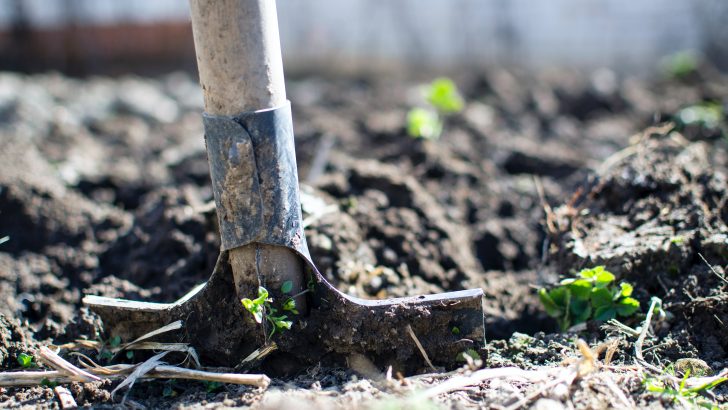Autumn is passing and it’s time to bed the garden down for winter, writes Ruadhán Jones
Do you have a gardening calendar? It’s a useful item and can be purchased, home-made or simply looked up online. Anyway, if you were to consult your calendar, you will most likely be getting little hints that the growing season is winding down and our thoughts can turn to putting our gardens to bed.
Of course, there are still things to be done – despite the date, we’ve hardly had the first frost yet and there may still be just enough time to plant some bulbs for spring! But the evenings have drawn in and the weather is getting wetter and colder, conditions unsuitable for growth. Whether you have cultivated a vegetable patch, a flower bed or well-mown lawn, here are a few tips for preparing your garden for its hibernation.
A neat lawn
As the weather turns, it will become harder to mow the lawn. The last cuts will most likely be made in late October, early November and the lawnmower can be safely stowed away – after a good clean of course!
But there is still work to be done. The extra rain and cool conditions can still facilitate the growth of moss. As it won’t affect the rest of the garden’s growth, now is a good time to scarify your lawn, which will promote drainage and let in light and air by removing excess, dead grass and moss.
Scarifying is a simple process requiring few tools, but it can be time consuming. Using a wire-tooth, springbok rake – a wide, springy rake which removes the detritus more quickly than a standard one – you go over the garden, raking up piles of grass and moss which can be thrown straight into the compost. If you want to save on time and energy, you could also purchase a mechanical scarifier, which looks much like a small lawnmower.
The second useful process to go through, especially if your garden is a little boggy, is to aerate your lawn using a garden fork or an aerator. While scarifying should take place at least once a year, aeration is typically necessary only if you are having issues with drainage through soil being too compact.
Aeration involves perforating the ground with small holes to allow air, water and nutrients to penetrate the grass roots. This helps the roots grow deeply and produce a stronger, more vigorous lawn. It’s best to do this in early to mid-Autumn, while there is still a little growth but the ground is softer.
Harvesting and storing vegetables
Some vegetable crops can be left in the ground over the winter, like kale, brussels sprouts, broccoli and a number of others – best to check online or consult a gardening manual. If you are ‘overwintering’ – leaving the crops in the ground – be sure to cut away any yellowing or dead leaves. These can encourage disease if left lying around and cutting them away also increases airflow around the stems.
Most root vegetables are best stored in a box of moist sand to prevent them losing moisture”
But many crops will need to be harvested, especially root crops like potatoes and carrots. Carrots can survive in raised beds, but I would still advise picking them as they are susceptible to root fly, also known as cabbage or carrot fly.
Harvesting them is the easy bit – storing them so that they retain their moisture is more difficult. Most root vegetables are best stored in a box of moist sand to prevent them losing moisture. Place a layer of dampened sand in a box before putting in the vegetables and then cover them over with another. This process can be repeated depending on the depth of the box.
You should store the following vegetables in this way: beetroot, carrot, celeriac, parsnips, swede and turnip. Place the box in a cool, dry place away from direct sunlight, such as a cellar, garage or garden shed.
Winter growth
If you are still very keen to be out in the garden, then there are some planting activities that can be undertaken in the heart of autumn. In fact, some bulbs need to be planted in autumn – garlic is a perfect example of just such a vegetable.
Garlic seed bulbs need a period of cold below 10°C for at least six weeks for the individual clove to form a bulb. They should be planted between October and early April, with Autumn garlic generally producing a bigger and better crop.
When preparing a patch to plant them, make sure it’s in the sunniest part of the garden as the bulbs need sunlight to thrive. If you have a wet site with heavy clay soil grow your garlic in raised beds to keep them from getting waterlogged.
To plant the garlic, break up the bulbs into individual and be careful not to damage or bruise them. Place the cloves in the soil 3-4 cm below the surface with the pointy end facing up. Spacing should be 25cm between rows and 20–25cm between plants.
Garlic is also perfect for gardeners with little space on a patio or a balcony. You can grow it in a pot of at least 20cm in diameter and depth to allow for good root growth. You can use a good multipurpose compost mixed with an organic fertilizer which is high in potash.
Plant a tree
If you want a project which is more time consuming and labour intensive, but season appropriate, you could try planting a tree. However, this is not a project that should be undertaken too lightly. Consideration should be given to the size of your garden; the proximity of the tree to your house; and the proximity to power lines and telephone wires.
If you would prefer not to put in all that planning, you could go for a small but picturesque tree, such as a the ever-popular cherry blossom. Famous for its delicate, bright pink blossom, this tree grows to a maximum height of 10 metres and a maximum spread of five.
Before digging, you will still need to consider where your underground utilities are – aside from that, just pick a place where it will get plenty of light. Dig a hole 60cm in diameter and 30cm deep. Add a layer of organic soil and compact it well to avoid settling.
Given that this is Ireland we’re planting in, it is advisable to stake the tree for support if it’s in an exposed area”
Remove the tree from its container and cut away or straighten any roots that stick out from the soil. Make sure that the tree itself, once placed in the hole, is upright and straight. Fill the hole gently and firmly, packing soil around the base of the root ball to stabilize it and eliminate air pockets. Further reduce air pockets by watering periodically while backfilling.
Given that this is Ireland we’re planting in, it is advisable to stake the tree for support if it’s in an exposed area. This involves planting a stake into the ground alongside the tree and attaching the two together using a tree-tie.
While activity in the garden is winding down, it hasn’t fully come to a close. While we still have the light, and given that we’re not going anywhere, it’s good to make the most of our chances to keep active outdoors.


 Ruadhán Jones
Ruadhán Jones
